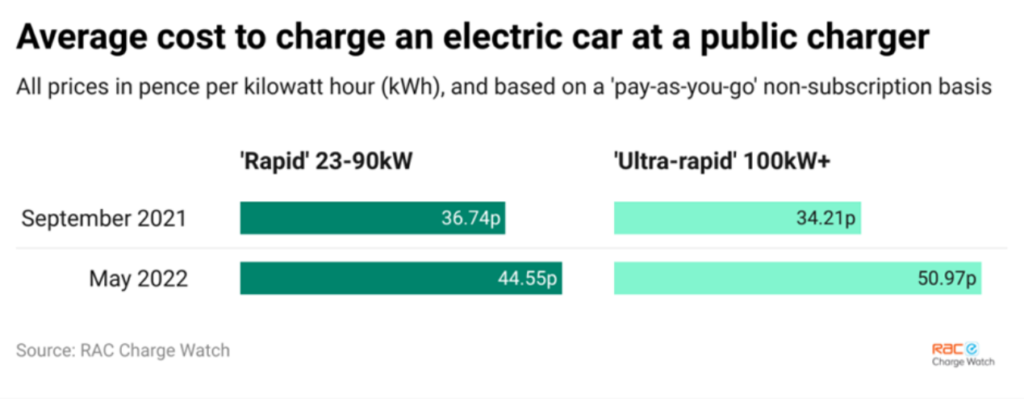Friday, 24. June 2022
As I explained last week local councils can now apply to prosecute motorists for moving vehicle violations including yellow box violations.
The Government is being urged to update guidance to councils on yellow box junctions ahead of local authorities being given the powers to fine drivers.
Failure to do so, says the RAC, could result in an “avalanche of penalty charge notices” being wrongly issued to drivers.
The new powers, which will allow local authorities, rather than the police, to enforce against moving traffic offences such as disregarding one-way systems or entering mandatory cycle lanes, were initially outlined by the Prime Minister, Boris Johnson, two years ago, in an effort to increase walking and cycling in England.
The change has already taken effect in London and Cardiff.
Identifying the potential problems in a new report – Enforcing yellow box junction rules fairly: the dangers facing councils and drivers – the RAC is calling on the Government to improve its official design, maintenance and enforcement guidance to councils to avoid thousands of drivers being wrongly fined.
While RAC research shows 57% of drivers are generally in favour of yellow box junctions being enforced, it has discovered that many junctions have design flaws which cause drivers to become trapped through no fault of their own, and that some are so poorly maintained that it’s hard to see where the yellow lines start and finish.
Design flaws include junctions that have been installed in completely the wrong places, boxes that are larger than they should be and ones where buildings or street furniture obstruct drivers from seeing where boxes end, making it impossible to assess whether there is enough space beyond the junction for their vehicle to fit into.
The situation can be compounded by crossings and stop lines set back which make it even more difficult for drivers to see whether there is space to make it through the junction in one go as they are further away to start with.
The RAC also believes the official guidance in Chapter 5 of the Traffic Signs Manual is generally unsatisfactory as it does not clearly state the specific purpose of box junctions or show how to design them in relation to vehicle movements at junctions, and lacks any information on how they should be maintained and enforced.
RAC report author Sam Wright, who was formerly responsible for the design and approval of yellow boxes on the Transport for London (TfL) road network, explained: “The key design principle is that yellow boxes should be no bigger than is necessary to prevent vehicles obstructing through movements.
“They are not designed for, and serve no purpose in, situations where vehicles are travelling in the same direction.
“The second main condition is that drivers should have adequate visibility beyond the box to be able to make a clear judgement before entering it.
“It’s not just that drivers need to see the end of the box, they need to see that there is space beyond the box for their vehicle to fit without any part of it overhanging.”
In the case of a car that will be 5-6 metres. For larger vehicles, it will be up to 15m.
Wright continued: “I think designers should have to take a car out in rush hour to see if they can negotiate the box without stopping, before insisting that others do the same.
“Drivers may also be surprised to hear that there is no legal requirement for authorities to meet this design criteria and it’s simply down to the competence of the enforcing authority.”
RAC head of roads policy Nicholas Lyes said: “In the absence of definitive guidance on the design, maintenance and enforcement of box junctions there will be a high degree of confusion among drivers and local authorities which could lead to an avalanche of penalty charge notices being wrongly issued and then having to be appealed.
“This will inevitably lead to an unnecessarily high number of appeals for local authorities to review, as well as some poor outcomes for drivers.”
The RAC has written to the Department for Transport (DfT) asking them to update the guidance to make it clear to local authorities what the minimum standard for design and condition of a box junction should be before letting enforcement begin, but they are adamant the present guidance is sufficient.
“We are worried that failing to update guidance to include the lessons learnt from more than 15 years of enforcement in London will lead to countless wrong fines being issued, no end of unnecessary stress for drivers who feel they have been unfairly treated and thousands of wasted council hours investigating appeals,” continued Lyes.
“It’s absolutely crucial that yellow box junctions are enforced fairly and, as things stand, this may not be the case which will mean many drivers will be treated poorly and lose out financially as a result.”
What’s the penalty for stopping in a yellow box junction?
In London, many box junctions have cameras in place, and you could be fined if you’re caught using the box incorrectly.
On TfL red routes, the penalty charge notice is now £160, reduced to £80 if paid within 14 days.
The penalty in Cardiff, which is the only authority outside London currently enforcing box junctions, is £70. If payment is made within 21 days, then this is reduced to £35.00.
Drivers can appeal fines if they think they can prove their innocence, but if they don’t win their cases it could prove to be a costly and time-consuming process. By Graham Hill thanks to Fleet News
